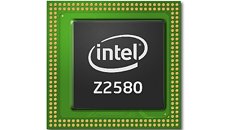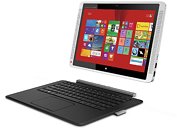Wednesday, July 19th 2017
Windows 10 Support for Older Hardware Encountering Difficulties, Cut Off
As part of its new "Windows as a Service" model, Microsoft elected to provide users with a guaranteed, steady stream of updates with virtually no clear, hard-defined EOL. However, Microsoft took refuge, as well it should, from an increasingly difficult support for different hardware sets: a little footnote, saying that you are eligible for Windows 10 for the "supported lifetime of the device." Yes, it's true you now don't have to purchase a new Windows version. But that also means that your devices potentially won't be supported for Microsoft's previous 5 + 5 policy (meaning, 5 years of feature and security updates, and 5 extra years for security updates only.)
The systems in question - built around Intel's Clover Trail Atom processors - are generally low-cost, low-power machines (mainly 2-in-1) released between 2012 and 2015 under Windows 8 and 8.1. These systems were deemed ready to receive Windows 10; however, they are currently blocked from installing Windows 10 Version 1703 - the "Creators Update." Attempts to install result in a message saying that "Windows 10 is no longer supported on this PC." The problem is that each Windows 10 update receives security fixes for just 18 months. Version 1607, the latest that these Clover Trail machines can install, will drop out of support in early 2018 - after which they'll cease to receive any patches at all.This problem may yet be temporary, however, since Acer has issued an official support response to this issue, which I transcribe below:
"The following Intel Clover Trail processors are currently not supported on Windows 10 Creators Update:
Even if this problem is temporary, though, it begs the question: how temporary is it? And how soon will these systems (or others, for that matter) start encountering compatibility problems again? Because as hardware evolves and Windows 10 carries on with its updates, the amount of possible hardware configurations will only increase - hardware configurations, and hardware platforms, for which the Redmond company will have to bake in support. And it stands to reason that Microsoft will continuously prefer to support new and newer systems, choosing to prioritize these over older hardware configurations.
Sources:
ZDNet, ArsTechnica
The systems in question - built around Intel's Clover Trail Atom processors - are generally low-cost, low-power machines (mainly 2-in-1) released between 2012 and 2015 under Windows 8 and 8.1. These systems were deemed ready to receive Windows 10; however, they are currently blocked from installing Windows 10 Version 1703 - the "Creators Update." Attempts to install result in a message saying that "Windows 10 is no longer supported on this PC." The problem is that each Windows 10 update receives security fixes for just 18 months. Version 1607, the latest that these Clover Trail machines can install, will drop out of support in early 2018 - after which they'll cease to receive any patches at all.This problem may yet be temporary, however, since Acer has issued an official support response to this issue, which I transcribe below:
"The following Intel Clover Trail processors are currently not supported on Windows 10 Creators Update:
- Atom Z2760
- Atom Z2520
- Atom Z2560
- Atom Z2580
Even if this problem is temporary, though, it begs the question: how temporary is it? And how soon will these systems (or others, for that matter) start encountering compatibility problems again? Because as hardware evolves and Windows 10 carries on with its updates, the amount of possible hardware configurations will only increase - hardware configurations, and hardware platforms, for which the Redmond company will have to bake in support. And it stands to reason that Microsoft will continuously prefer to support new and newer systems, choosing to prioritize these over older hardware configurations.


30 Comments on Windows 10 Support for Older Hardware Encountering Difficulties, Cut Off
I'm not sure how many users will actually be effected by this though, part of the user who would buy something this cheap may only be able to afford the very base model, but a life expectancy of 5+ years on such an old device is not realistic either, between batteries and other wear and tear.
It really just confirms what almost everyone here knows, Intel makes shit graphics.
Intel processors, those using Intel based graphics continue to be supported.
At least BayTrail and Cherry Trail are not affected.
BTW, ArsTechnica mentioned this very important aspect of the problem:Which means that older devices with Intel GMA, IntelHD or NVidia ION on board should be fine.Clover Trail lineup is barely 5 years old, and the actual devices based on these are even younger. Imagine getting a HP Envy convertible or some ultra-light and ultra-cheap Samsung netbook in 2013-2014, then a couple of years later being actively forced to upgrade to Windows 10 under the slogan "it's free, it's better than 8, and all of your stuff is going to work just fine", then only a year later figuring out that it actually won't.
BTW, Pineview and Clover Trail Atoms in general are very durable. In my personal experience I've already seen a lot of dead BayTrail SoCs, and only one dead atom Z2560 + two dead N450s.
Additionally, Microsoft isn't likely going to be around in 5 to 10 years for this to even be a problem for very long. But time will tell..Actually, I'm still using an Atom N270 based netbook made in 2006. Not running 10 on it, but still. It's on it's third battery and second hard drive, but still going strong, if a bit slow. Still does what is needed of it. So I should replace a working device with a new one, why? Because Microsoft says so? Or maybe because you say so? Microsoft, nor you, get to decide how long something will be useful and remain so. That is up to the owner of the device.And a lot of people, businesses, and governments are with you.
which is all the ATOM Z2xxx from 2012 ....
which are fking worthless at any level of use I would't given a ATOM device to my grandmother
So basically there saying by "upgrading" to W10 you loose support after just a few yrs.
Agree with others that the ATOM's are a :roll:anyway but still, those people that do have them and got this problem wouldn't be to pleased.
After all the troubles the Anniversary update created, Microsoft hasn't pushed Creator's Update out over Windows Update unless the manufacturer gives the all clear to do so. In other words, these Atom processors will be stuck on Anniversary update + minor updates indefinitely.
And the problem goes back as far as 2015-2016. MS has released the update for a previous versions, but it was more like a bandaid for it, because Intel had no working Win10 driver still (only Generic VGA driver is working).
What possibly went wrong, is a PowerVR SGX545 iGPU. Even though it has an adequate performance for general productivity and media playback, it's still an old arch from 2010. At the time of crisis Imagination Technologies were too busy stamping-out mobile GPUs and probably said to Intel to take a long walk on the beach, cause they aren't gonna work on windows 10 driver (once again, this is just a wild, but calculated, speculation). Intel, in its turn, tried to calm down the community by posting stuff like "a third-party is currently working on the driver" for the next year, until they completely dropped the ball and all netbooks and convertibles were finally out of warranty.
Z2xxx might be a weird CPU and a total f$%k up on intel's side of things (no 64-bit support, only DDR2 bus, third-party graphics accelerator, worse than older 500 series performance), but messing up a whole platform support in such a bad way is very horrible practice. I'm also pretty sure that SGX545 does not have a proper Linux driver either. E.g. not only 3D, but even multimedia acceleration doesn't work. CedarX was problematic not only on Atoms, but also on many ARM SoCs running Linux.MS did not disappear. They did a few patches to mitigate the symptoms (no icons/text), but they also said that the problem is basically lack of support from Intel(e.g. no working driver).
blogs.windows.com/windowsexperience/2016/09/14/announcing-windows-10-insider-preview-build-14926-for-pc-and-mobile/#rTlkiy4RtgXwiQcL.97